Phlox paniculata
Phlox paniculata fall phlox
Most phlox species bloom in the spring so this species can be identified simply by its flowering season - July to September. This native perennial species is a member of the phlox family. The stem is stouter than the other phlox species and the plant is usually upright. The plant has wide leaves and very prominent veins that stand out on the undersurface of the leaf. These ovate or lance-shaped leaves are opposite and 3-6 inches long. There usually are 15-40 pairs of leaves below the fragrant flower cluster. The plant grows 2-6.5 feet high, the tallest of our native phloxes.
Individual flowers are about one inch long. There are five spreading petal-like lobes fusing to form a long slightly hairy corolla tube. There is some variation in the size and shape of the petal-like lobes. Flowers form in a dense pyramidal cluster at the top of the smooth stem. As with other phlox species, the flower color varies from white to pink to light lavender.
The fall phlox grows on the edges of woods and in thickets. It does best in soils with moderate fertility and moisture. The species is native to interior parts of the eastern United States from northern Iowa, central New York, and south, especially in the mountains. It is documented in most Pennsylvania counties. It is a popular garden plant and thus can be a garden escapee outside of its natural range.
Extracts from this species have been used as an herbal remedy, mostly as a laxative and for treating boils. This species is sometimes called perennial phlox, garden phlox or summer phlox. A number of commercial cultivars are available.
Habitat & Range
Grows in meadows, fields and man-disturbed habitats. Prefers full to part shade and moist, but well-drained soil, loamy or clay-based.
Present throughout the state.
Range: Native to the interior eastern United States, ranging from northern Iowa and central New York southward, with a strong presence in mountainous regions.
| EMP: | FACU |
|---|---|
| NCNE: | FACU |
Phenology
Flowers from June through October. Blooming occrus for 1½ month.
Characteristics
Inflorescence branched; terminal pyramidal panicle with sub-clusters of multiple flowers
Flowers deep pink to white corolla with 5 petal-like lobes and long hairy tube; calyx green, puberulent or glabrous; 5 stamens deep within the corolla tube; ½–¾″ across, 1″ long
Leaves simple, opposite, leaf margins entire; ovate to ovate-oblong; upper surface smooth, lower surface maybe slightly hairy; lower leaves on short petioles, upper mostly sessile; conspicuously pinnately veined; 3 to 6″ long and abt 1″ wide
Stem stout, upright, sturdy, usually unbranched; smooth, green
Fruit 3-valved, dry capsule that splits open when ripe; 1 to 4 seeds per locule
Height 2 to 6.5 feet
Plant Codes
S-rank: S5 (Secure)
G-rank: G5 (Secure)
Ecology
Butterflies, hummingbirds, and moths are the main pollinators, particularly tiger swallowtails, skippers and clearwing moths.
Voles and rabbits may nibble on the roots, making them potential herbivores of the plant.
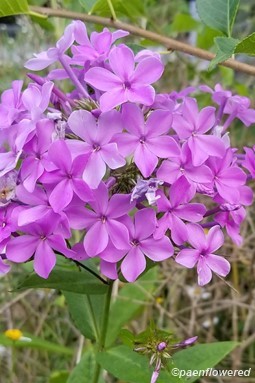
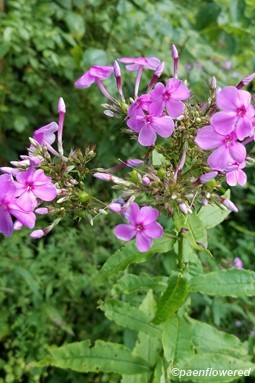
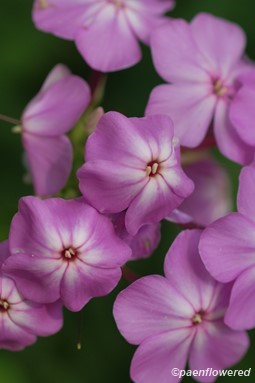
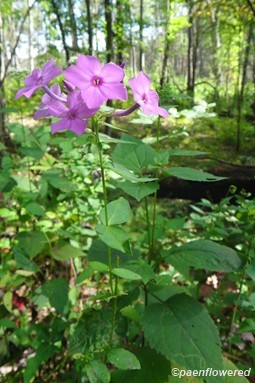
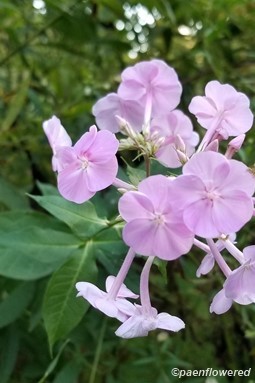




Comments
Have you spotted this plant in your area? We'd love to hear about your experience! Share your comments or questions about the plant below. Comments are moderated before posting.